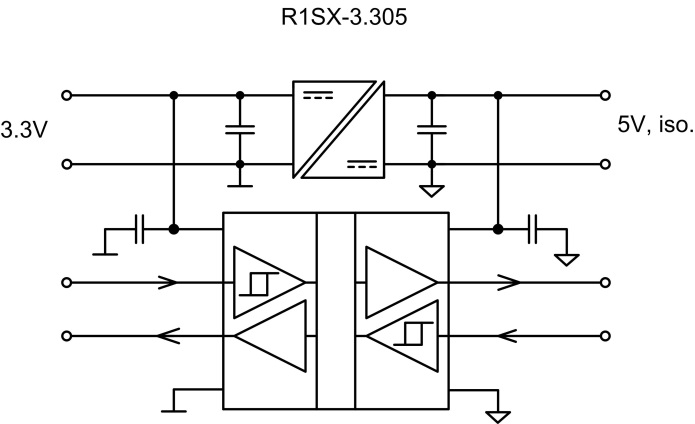Test and Measurement Power Supplies
Testing and measurement (T+M) covers a wide range of applications but essentially involves detecting a physical variable (current, voltage, temperature, etc.) under various operating conditions (normal, at the operating limits, or during over-stressed operation) and recording and analyzing the result.
Often, measurement isolation from ground is required because the part being tested or measured may be at a different ground reference voltage from the recording or analyzing equipment. When the T+M equipment is line-powered, an AC/DC converter provides isolation and may be followed by a DC/DC converter to achieve galvanic isolation between separate power rails for inputs of multi-channel or multi-parameter T+M equipment. This prevents cross-talk or interference between signal inputs. DC/DC converters may therefore be necessary even if the measurement unit itself is battery-powered.
Analog input test and measurement sensors commonly require dual-rail supplies to power operational or precision signal amplifiers. The amplified and conditioned output is typically fed into Analog-to-Digital converters, and the data stream is then isolated using Digital Isolators. ADCs and DIs require independent 3.3V or 5V rails derived from the main 12V or 24V supply rail. Finally, digital bus isolators (USB, CAN, GPIB, etc.) are often essential to avoid ground loops, improve safety, or achieve single-fault tolerance in the T+M system.
Often, measurement isolation from ground is required because the part being tested or measured may be at a different ground reference voltage from the recording or analyzing equipment. When the T+M equipment is line-powered, an AC/DC converter provides isolation and may be followed by a DC/DC converter to achieve galvanic isolation between separate power rails for inputs of multi-channel or multi-parameter T+M equipment. This prevents cross-talk or interference between signal inputs. DC/DC converters may therefore be necessary even if the measurement unit itself is battery-powered.
Analog input test and measurement sensors commonly require dual-rail supplies to power operational or precision signal amplifiers. The amplified and conditioned output is typically fed into Analog-to-Digital converters, and the data stream is then isolated using Digital Isolators. ADCs and DIs require independent 3.3V or 5V rails derived from the main 12V or 24V supply rail. Finally, digital bus isolators (USB, CAN, GPIB, etc.) are often essential to avoid ground loops, improve safety, or achieve single-fault tolerance in the T+M system.




























































































